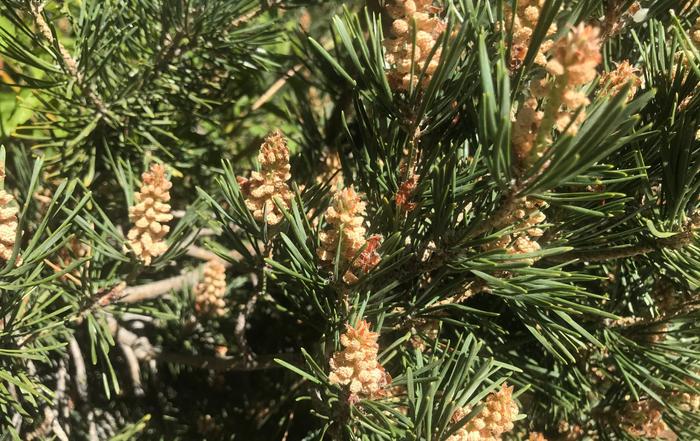In the intricate realm of palynology, distinguishing between the minuscule and often indistinguishable pollen grains produced by closely related conifer species has long posed a formidable challenge. Fir, spruce, and pine pollen grains share strikingly similar morphological characteristics, making traditional microscopic techniques laborious and prone to error. Addressing this complexity, a groundbreaking study led by researchers from The University of Texas at Arlington, the University of Nevada, and Virginia Tech unveils an innovative artificial intelligence (AI) system designed to dramatically enhance the precision and efficiency of conifer pollen classification. This advancement not only pushes the boundaries of ecological research but also harbors significant implications for public health and environmental management.
Pollen grains, minute structures crucial for plant reproduction, offer more than reproductive clues; they are valuable biological archives that reveal patterns of historical vegetation and environmental transformations. Sedimentary deposits in lakebeds and peat bogs act as time capsules, preserving these grains layer by layer, thus enabling scientists to reconstruct ancient ecosystems with remarkable detail. Given the sensitivity of plant distribution to climatic variables such as temperature, humidity, and precipitation, deciphering the composition of these pollen deposits contributes to our understanding of past climate dynamics and informs predictive models of ecological responses under future climate scenarios.
Conventional methodologies for pollen identification rely extensively on expert morphological assessment under high-resolution microscopy. However, the subtle variances between pollen of morphologically similar species amplify the risk of misidentification and prolong analytical timelines. The newly developed AI framework harnesses cutting-edge deep learning algorithms to overcome these limitations by automating the classification process, thereby accelerating data acquisition without sacrificing accuracy. By training on extensive datasets derived from pollen samples curated at the University of Nevada’s Museum of Natural History, the system was rigorously evaluated across nine distinct AI models, with several demonstrating superior performance relative to manual expert assessments.
The implications of this technology extend beyond academic curiosity. As Dr. Behnaz Balmaki, assistant professor of research in biology at UT Arlington, outlines, enhanced resolution in pollen identification can revolutionize urban planning strategies, particularly in densely populated or sensitive locales such as schools and hospitals. Pinpointing the precise timing and prevalence of allergenic pollen release enables the development of targeted advisories and mitigates the health burden associated with respiratory allergies. This integration of ecological data with public health protocols exemplifies a forward-thinking approach to environmental medicine and urban ecosystem management.
From an ecological monitoring perspective, the AI-driven identification of pollen grains facilitates large-scale and longitudinal studies of vegetation dynamics. Detecting shifts in pollen composition over time allows researchers to infer changes in forest health, moisture regimes, and even past disturbance events such as wildfires. This enhanced surveillance capacity is vital for anticipating the ramifications of climate variability and anthropogenic pressures on forest ecosystems. Furthermore, pollen data serve as proxies for broader biodiversity assessments, aiding conservation efforts aimed at preserving critical habitats and sustaining pollinator populations dependent on specific plant species.
Technically, the deep learning models employed in this study utilize convolutional neural networks (CNNs), a class of AI architectures exceptionally adept at image recognition tasks. These networks parse intricate visual patterns from high-definition pollen grain images, enabling the discernment of species-specific morphological features that often elude human observers. Training such models requires meticulously labeled datasets, where expert palynologists confirm the identity of pollen grains, ensuring that the AI learns from accurate exemplars. Data augmentation techniques were also utilized to enhance model robustness, simulating variations in image quality and orientation.
Despite the remarkable capabilities of AI, Dr. Balmaki emphasizes that the technology is designed to complement rather than replace human expertise. Effective pollen identification demands not only technical proficiency in microscopy but also ecological context to interpret findings meaningfully. Sample preparation remains a critical step, requiring careful extraction and preservation techniques to avoid contamination or deformation of pollen grains. The collaboration between AI specialists and ecologists embodies a synergistic approach, combining computational power with domain knowledge to achieve unprecedented analytical depth.
Looking forward, the research team intends to broaden the AI classification framework to encompass a wider array of plant taxa across diverse geographic regions within the United States. Expanding the training dataset will enhance model generalizability, enabling real-time monitoring of how plant communities respond to extreme weather phenomena, land-use changes, and other environmental stressors. Such comprehensive pollen surveillance systems could become instrumental in early warning mechanisms for ecological disturbances and guide targeted conservation and management interventions.
This pioneering study also propels palynology into the digital era, transforming a traditionally manual discipline through integration with machine learning. The fusion of big data analytics with environmental science highlights a growing trend wherein interdisciplinary collaborations drive innovation. The publication of these findings in the journal Frontiers in Big Data underscores the importance of data-centric approaches to unraveling complex biological and ecological questions.
In summary, the emergence of AI-enhanced techniques for conifer pollen classification exemplifies how advanced computational tools are revolutionizing ecological research and practical applications. By enabling rapid, accurate species identification, this technology widens the scope of environmental monitoring and resource management. It bridges critical gaps between scientific understanding, policy-making, and public health, charting a promising course for future interdisciplinary endeavors in addressing complex ecological challenges.
Subject of Research: Not applicable
Article Title: Deep learning for accurate classification of conifer pollen grains: enhancing species identification in palynology
News Publication Date: 13-Feb-2025
Web References:
Frontiers in Big Data Article
DOI link
Image Credits: UTA
Keywords: Pollen, Plant reproduction, Palynology, Forest ecosystems, Trees, Applied sciences and engineering, Agronomy, Forestry, Agricultural policy, Agriculture, Artificial intelligence, Machine learning, Computer science
Tags: AI in environmental scienceAI pollen classificationancient ecosystems reconstructionclimatic variables impact on plantsconifer pollen analysisecological research innovationsenvironmental management strategieshistorical vegetation patternspalynology advancementspublic health implications of pollenseasonal allergies causessedimentary pollen archives





